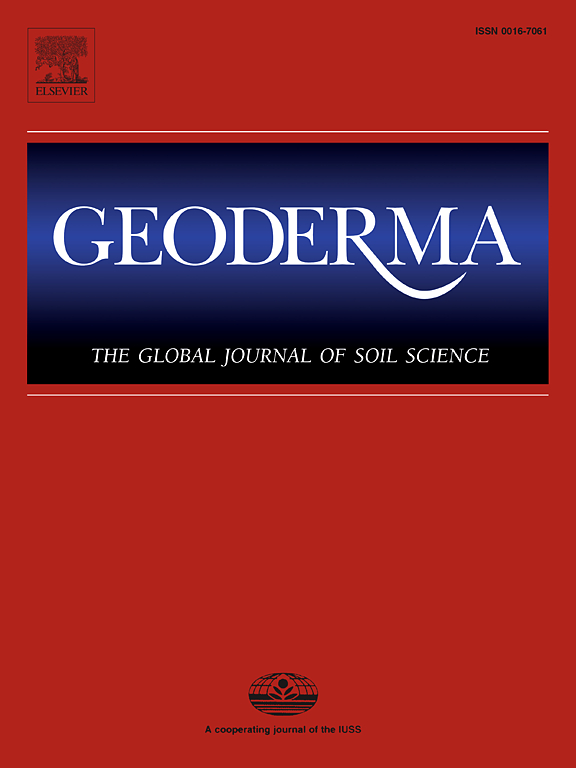Planting of nitrogen-fixing shrubs promote soil carbon sequestration by increasing mineral-associated organic fraction
IF 5.6
1区 农林科学
Q1 SOIL SCIENCE
引用次数: 0
Abstract
Nitrogen-fixing shrubs have been planted worldwidely due to their excellent performances in soil improvement and economic benefits. However, their role and mechanisms on soil organic carbon (SOC) sequestration are unclear. In this paper, a field experiment in plantations of Caragana korshinskii and meta-analysis were conducted to investigate the effects of planting nitrogen-fixing shrubs on SOC accumulation globally, and to explore the underlying mechanisms. Field experiment demonstrated that planting of C. korshinskii enhanced mineral-associated organic carbon (MAOC) concentration and proportion, particularly in the subsoil. This was due to the nitrogen increase-induced microbial growth and accumulation of microbial necromass. The role of microorganisms in SOC fractions in soil profiles was different. Bacterial community structure affected degradation degree of lignin phenols while fungal and bacterial community co-regulated microbial necromass carbon and thus increased MAOC in topsoil. In subsoil, fungal community increased microbial necromass carbon and thus promoted MAOC whereas the role of bacteria was minimal. Results from meta-analysis confirmed that nitrogen-fixing plantations effectively promoted SOC sequestration by increasing the content and proportion of MAOC along stand age. The increase in SOC was mainly ascribed to the nitrogen-fixing shrubs-induced increases in nitrogen availability and microbial growth along stand age. In addition, the globally average proportions of MAOC were 64.7% and 80.5% in topsoil and subsoil respectively, whereas the predicted maximums were about 87.7% and 92.4% accordingly. In all, planting of nitrogen-fixing shrubs was a great way to promote SOC content and stability by increasing mineral-associated organic fraction in afforestation for carbon sequestration.
求助全文
约1分钟内获得全文
求助全文
来源期刊

Geoderma
农林科学-土壤科学
CiteScore
11.80
自引率
6.60%
发文量
597
审稿时长
58 days
期刊介绍:
Geoderma - the global journal of soil science - welcomes authors, readers and soil research from all parts of the world, encourages worldwide soil studies, and embraces all aspects of soil science and its associated pedagogy. The journal particularly welcomes interdisciplinary work focusing on dynamic soil processes and functions across space and time.
 求助内容:
求助内容: 应助结果提醒方式:
应助结果提醒方式:


